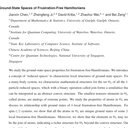Plasma metabonomics study on toxicity biomarker in rats treated with Euphorbia fischeriana based on LC-MS.
Słowa kluczowe
Abstrakcyjny
Lang-du (LD) has been traditionally used to treat human diseases in China. Plasma metabolic profiling was applied in this study based on LC-MS to elucidate the toxicity in rats induced by injected ethanol extract of LD. LD injection was given by intraperitoneal injection at doses of 0.1, 0.05, 0.025 and 0 g kg(-1) body weight per day to rats. The blood biochemical levels of alanine aminotransferase, direct bilirubin, creatinine, serum β2-microglobulin and low-density lipoprotein increased in LD-injected rats, and the levels of total protein and albumin decreased in these groups. The metabolic profiles of the samples were analyzed by multivariate statistics analysis, including principal component analysis, partial least squares discriminant analysis and orthogonal projection to latent structures discriminate analysis (OPLS-DA). The metabolic characters in rats injected with LD were perturbed in a dose-dependent manner. By OPLS-DA, 18 metabolites were served as the potential toxicity biomarkers. Moreover, LD treatment resulted in an increase in the p-cresol, p-cresol sulfate, lysophosphatidylethanolamine (LPE) (18:0), LPE (16:0), lysophosphatidylcholine (16:0) and 12-HETE concentrations, and a decrease in hippuric acid, cholic acid and N-acetyl-l-phenylalanine. These results suggested that chronic exposure to LD could cause a disturbance in lipids metabolism and amino acids metabolism, etc. Therefore, an analysis of the metabolic profiles can contribute to a better understanding of the adverse effects of LD. Copyright © 2016 John Wiley & Sons, Ltd.



